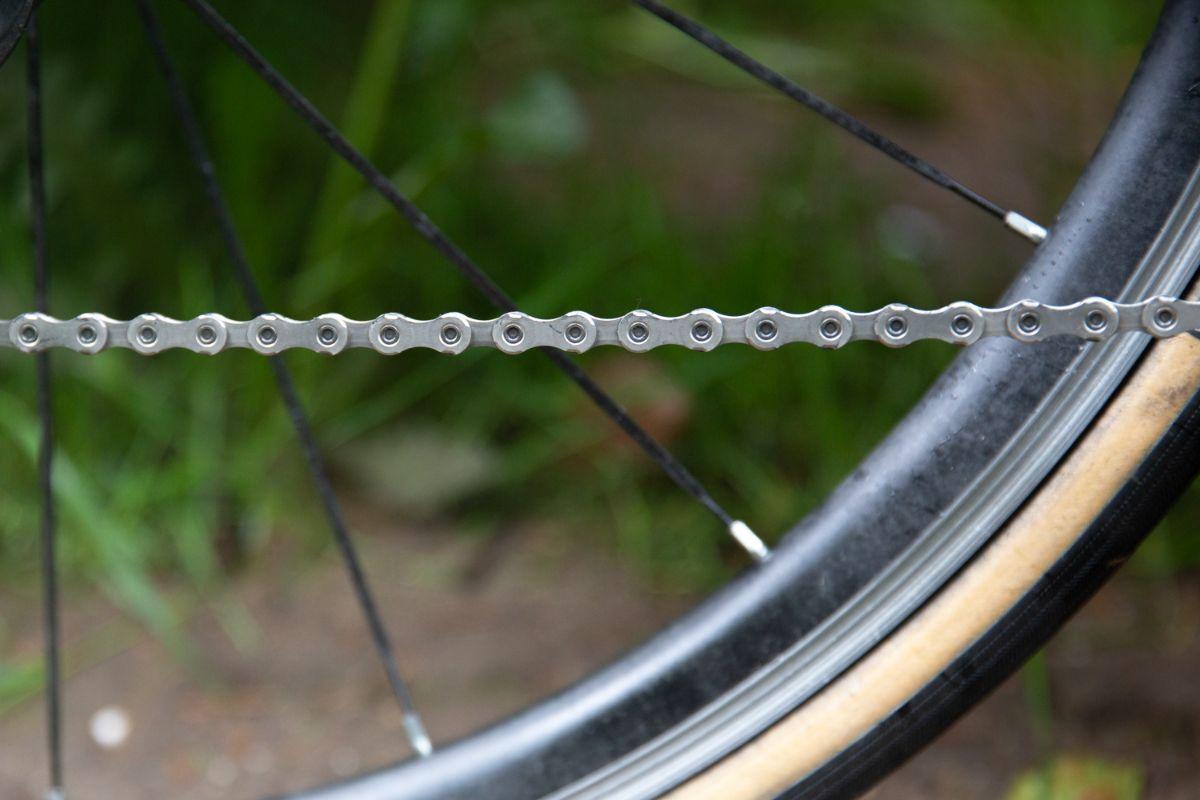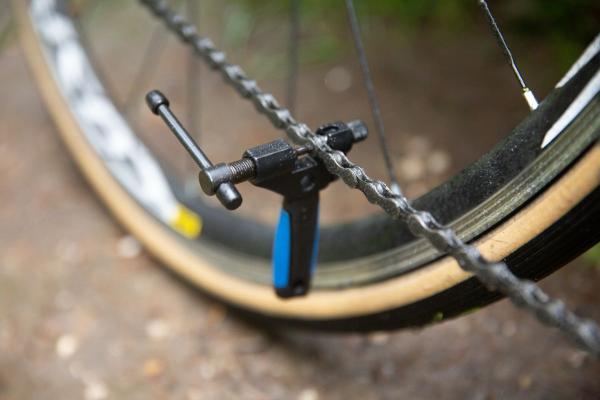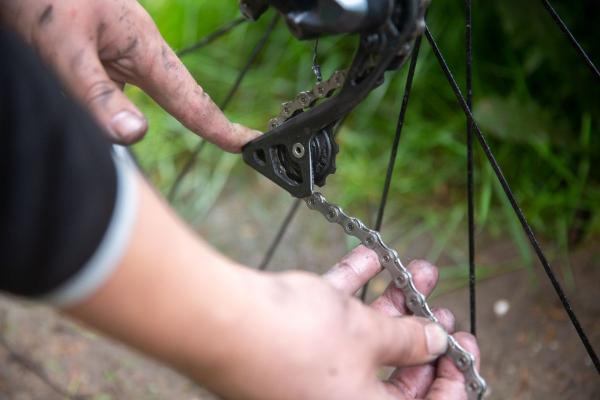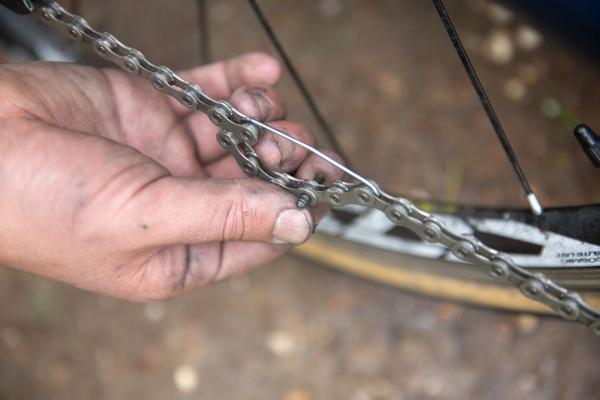How to Replace a Chain on a Road Bike or Mountain Bike? [How-To]
Rain, hail, mud and other dirt cause your bike chain to wear out. Measuring your bike chain regularly - and replacing it when necessary - can prevent unnecessary wear of your cassette and cogs. We'll explain how you can replace a chain on your road bike or mountain bike in just a few minutes. And this isn’t just to make your components last longer. It’s also totally worth it for that smooth feeling of riding with a clean, new bike chain.
In order to replace a chain, you don’t need that many tools. Obviously, the first step is to determine whether you have to replace your chain at all. For
the most accurate diagnosis, you’re best off using a chain checker.
In the above images you can see how a chain checker works, as well as how to check if your chain needs replacing if you don't have this tool handy. Our preference is for using a chain checker - it's just more accurate.
How do I know the correct length for my chain?
In order to get the best possible shifting performance, your chain needs to be long enough. There are different methods to determine the correct length. We use the big-big method. That means placing the chain onto the largest chainring at the front and the largest cog at the rear.
Do you have a full-sus mountain bike? Then take the rear suspension travel into account. Then the rule of thumb is: big-big + 2 chain links. Bring the ends of the chain together. Pull the chain taught until the derailleur cage points forward, almost fully extended.
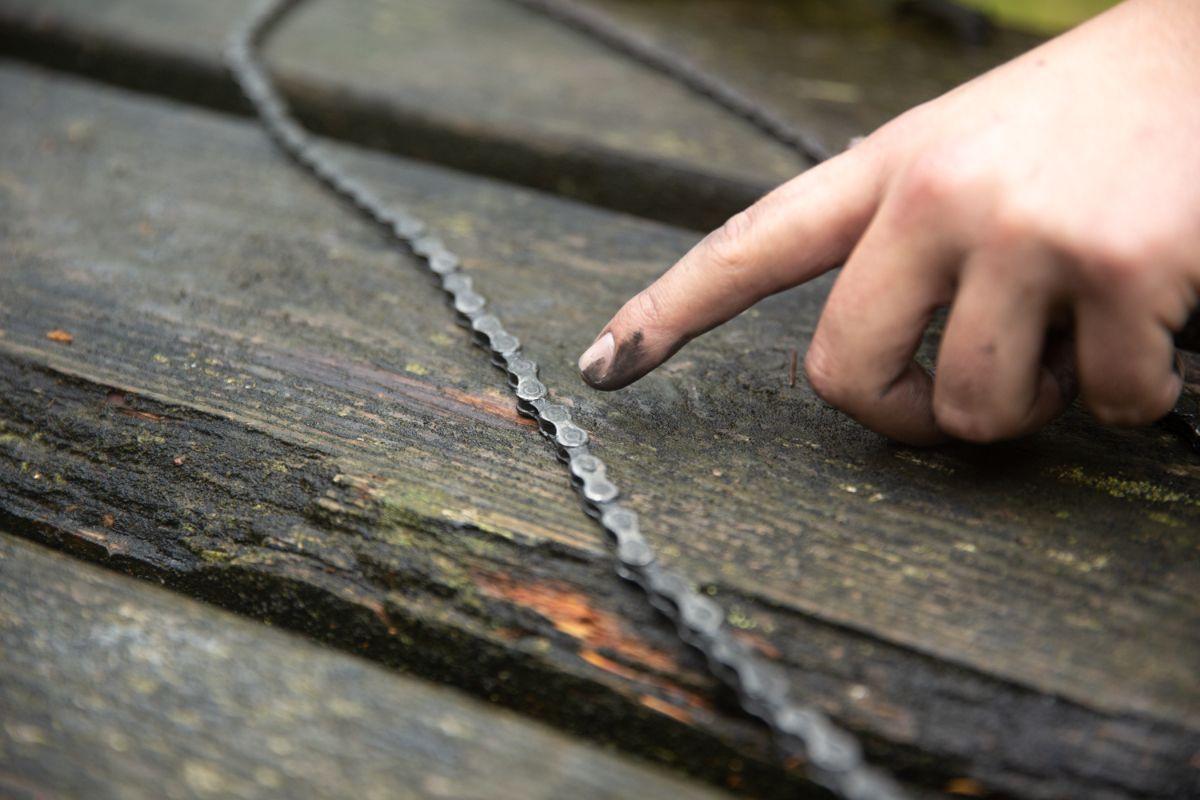
With a Shimano chain, one end needs to be an outer link while the other end is an inner link. Does the chain have an outer link with a breaking pin? Then shorten the other end until you’re left with an inner link. If you have a KMC or SRAM bike chain, you have to end up with two inner links. But the easiest method to see how long your chain should be is to simply place it right next to your old chain.
Chain maintenance
That you'll need to replace your chain from time to time is unavoidable, but if you take good care of it you'll need to replace it less often. You do this by cleaning your drivetrain well and lubing your chain often.
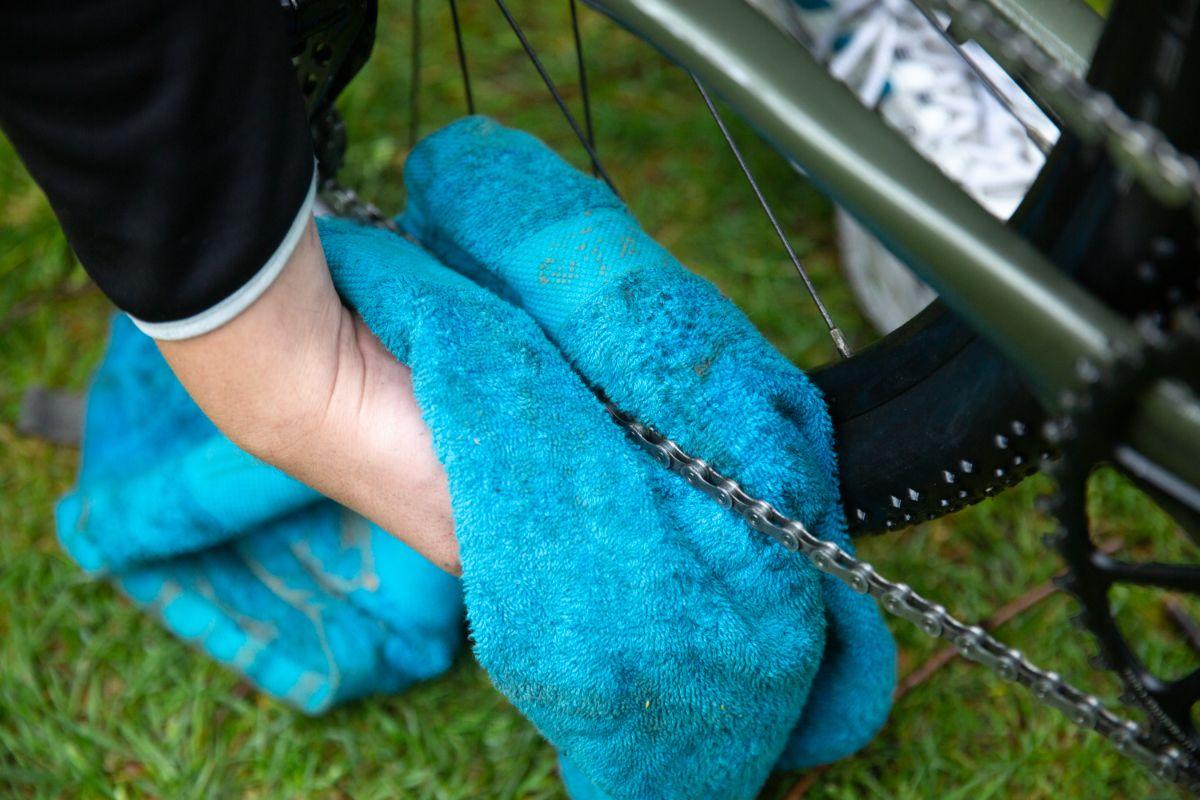
Missing link or no missing link?
When it's time to replace your chain it's important to check what tools you need for the type of chain you're putting on. There are two kinds of bike chain (broadly speaking), namely chains with a missing link that you fit using missing link pliers and chains without a missing link for which you need a chain breaker. In this blog we'll explain how to replace both these kinds of bike chain.
Replacing a chain (quick link)
If your bike chain has a missing link, it's easy to replace using a pair of missing link pliers. You can identify a chain that has a missing link by looking to see if it has a link that looks different from all the others. To change a missing link bike chain you need the following:
- Missing link pliers
- New bike chain
- Chain checker tool
- Old spoke tool
1. Look for the missing link in your bike chain
You'll see that one link clearly looks different from the others, that's the missing link.
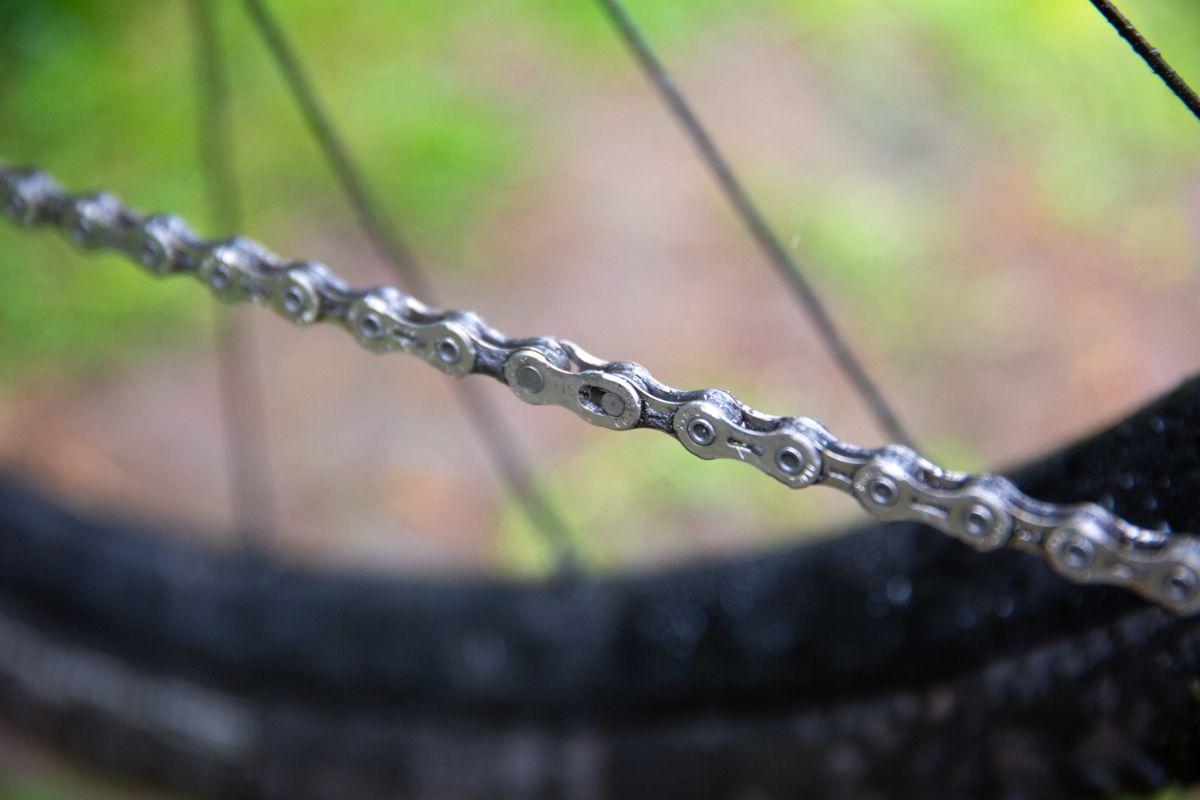
2. Open the chain using a pair of missing link pliers
Open the missing link pliers and place them on either side (left and right) of the missing link, close the pliers and the chain will come loose.
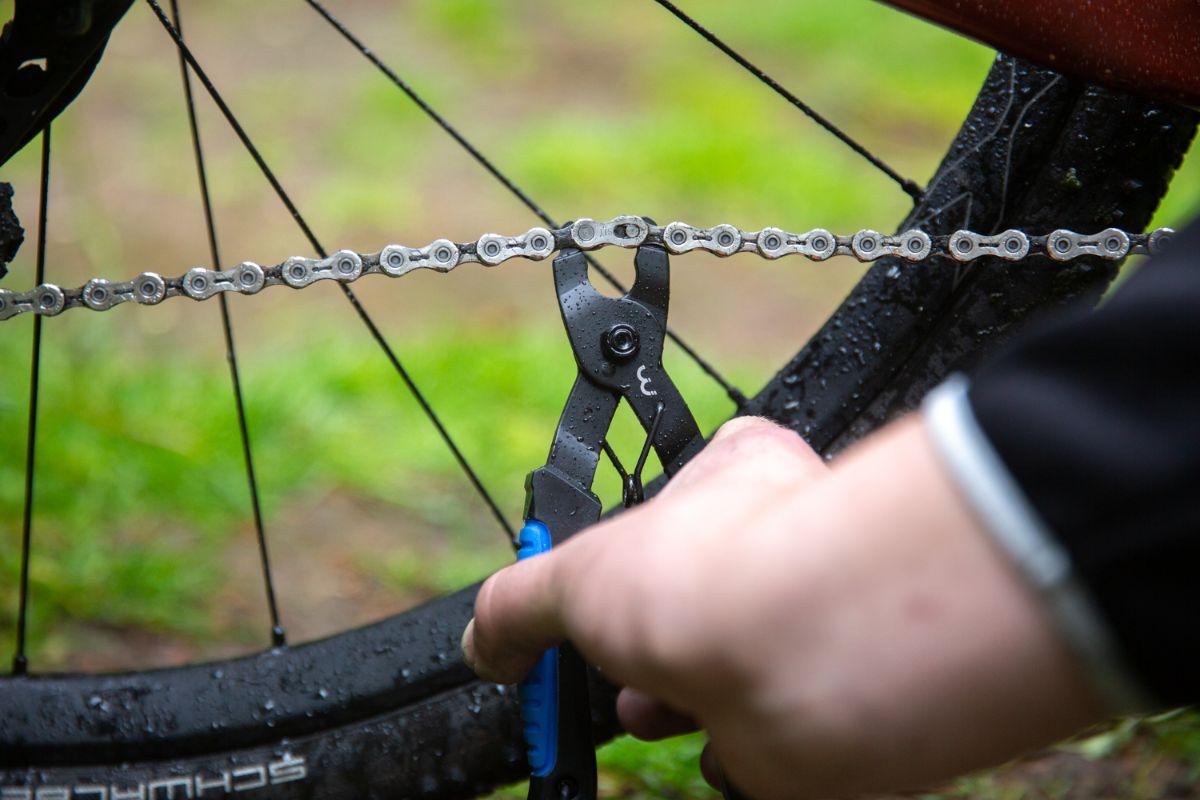
3. Place your new chain on the smallest chain ring
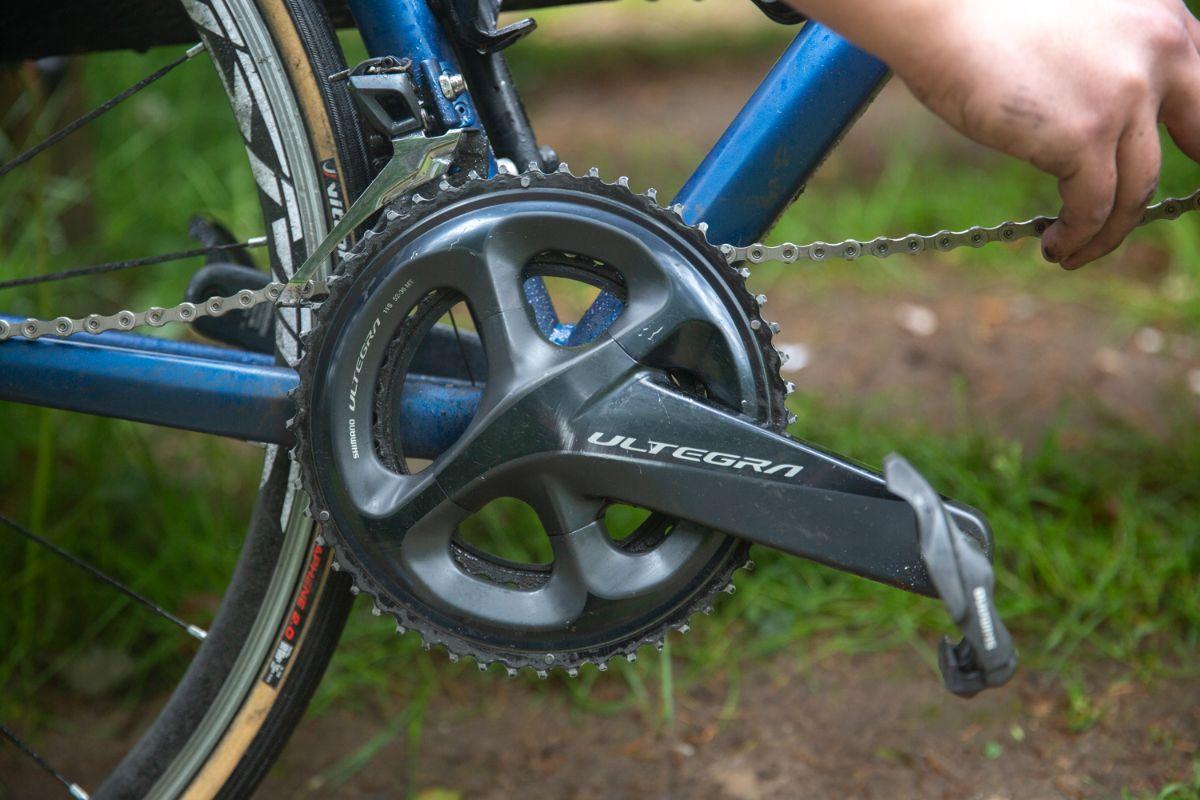
4. Put your chain on the smallest cog on your cassette
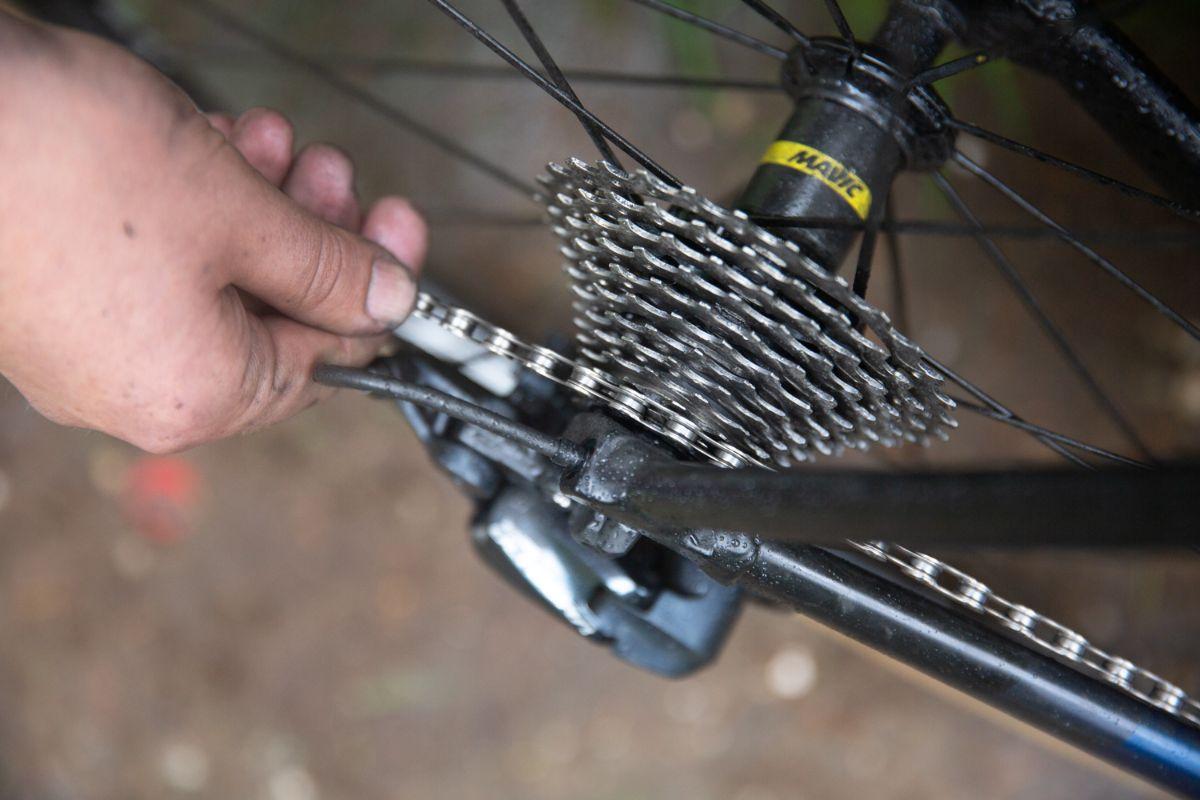
5. Run your new chain in front of the top jockey wheel of your rear derailleur
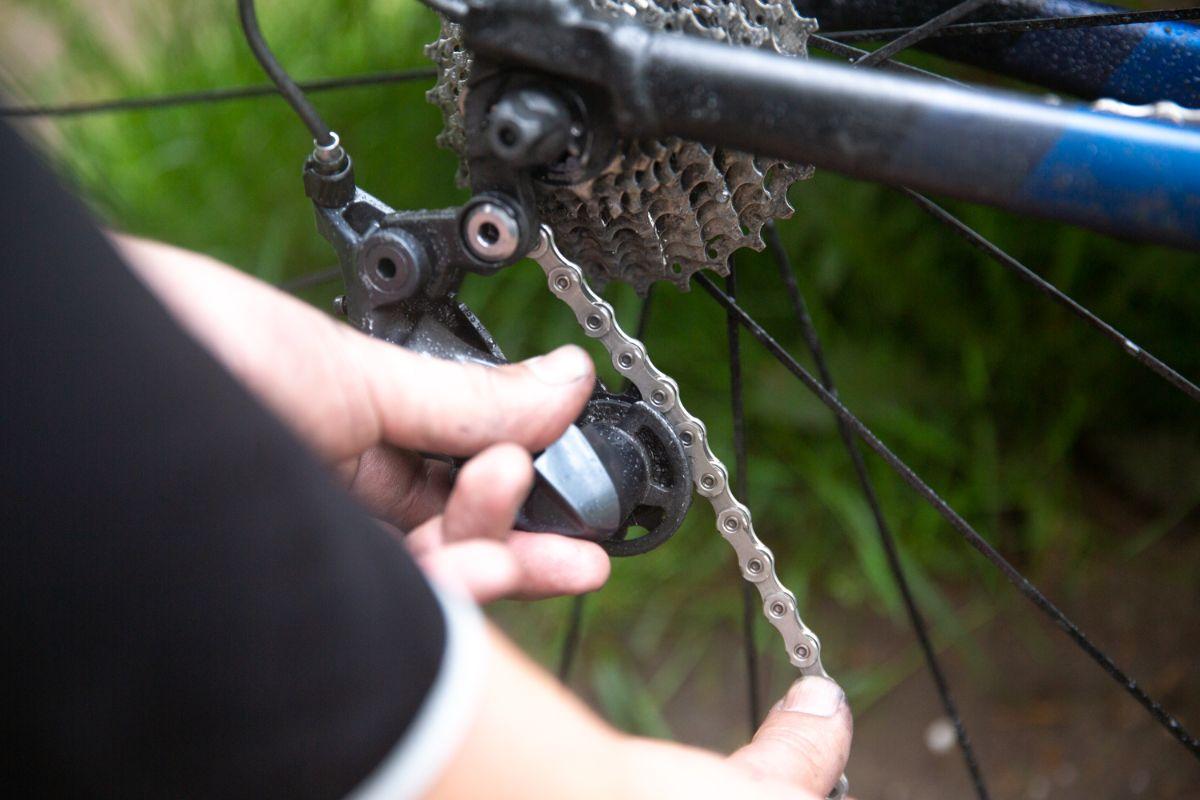
6. Run the chain through the derailleur cage channel
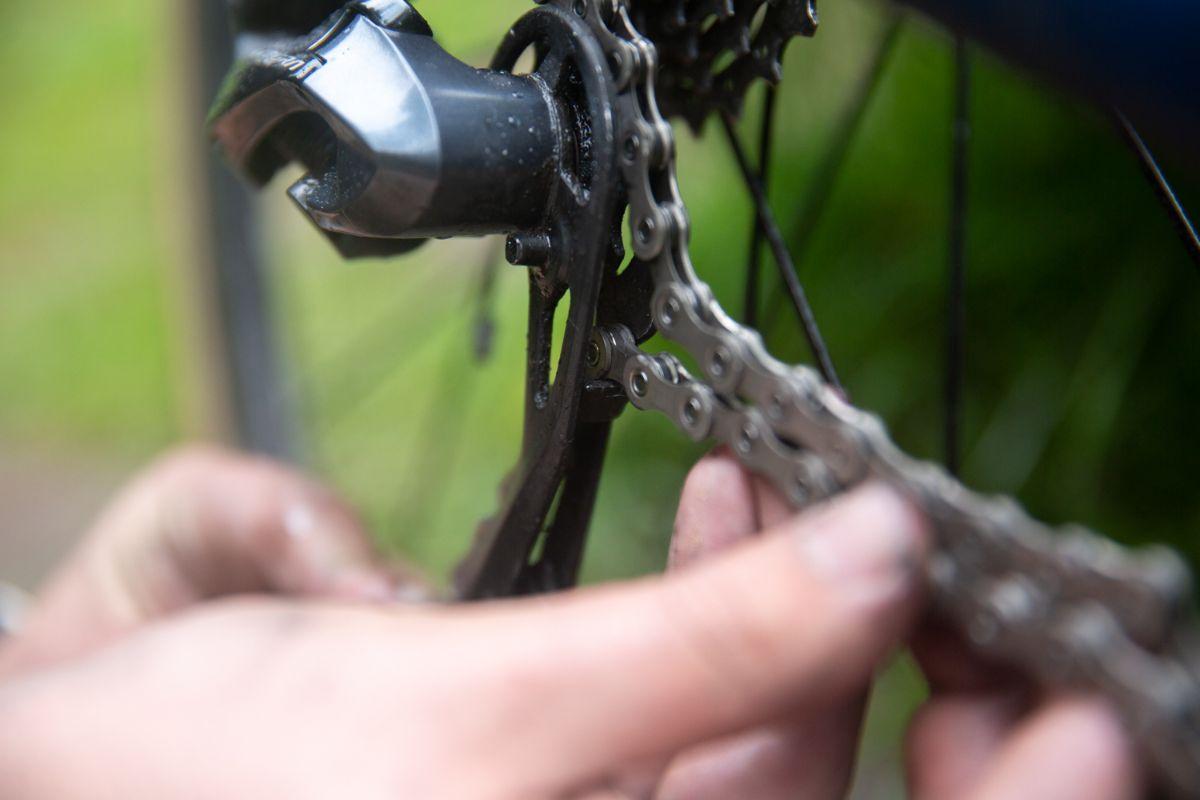
7. And behind the lower jockey wheel
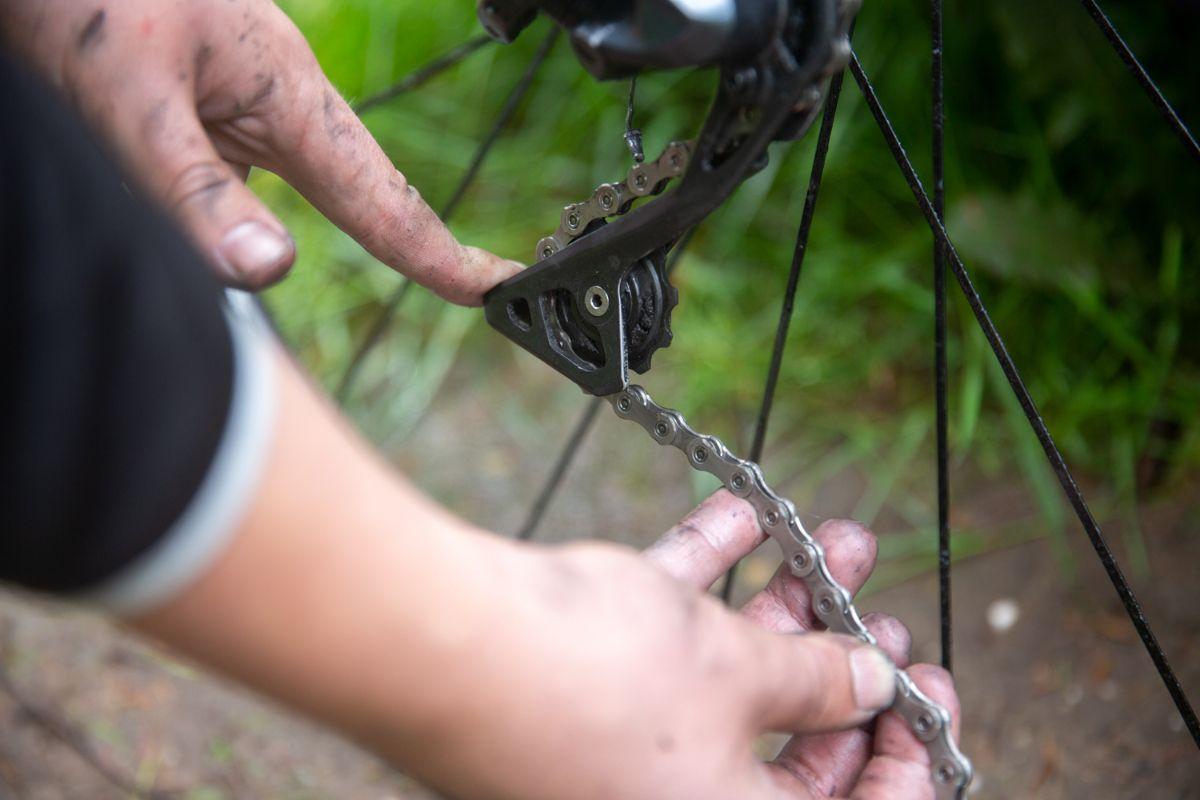
8. Check that your bike chain is long enough
You do this by checking that the chain doesn't have any slack when on the smallest chainring at the front and the smallest cog at the back. If in that position there is slack, then you need to shorten your chain.
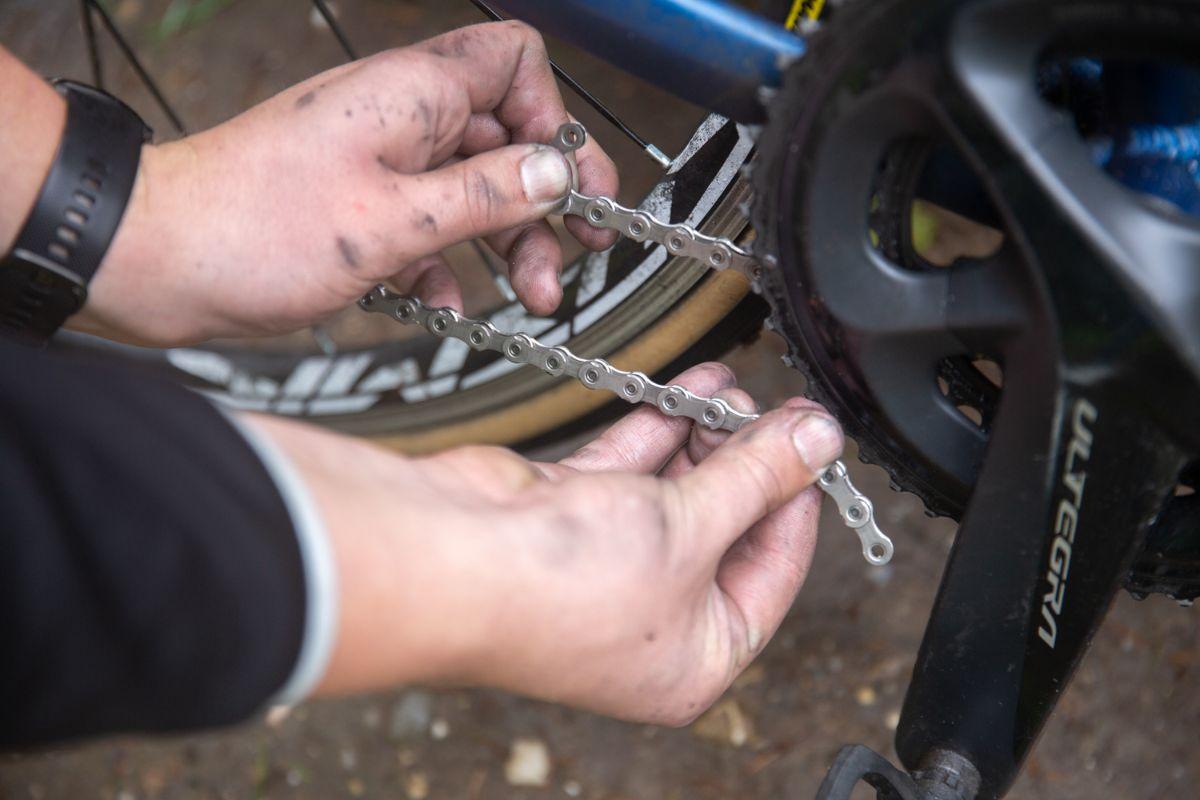
9. To make fitting a bike chain a bit easier you can use either the spoke hook on your missing link tool. If your tool doesn't have this, just use an old wheel spoke bent into a hook. Use it to hook the part of the chain you want to work on, pulling the tension off it.
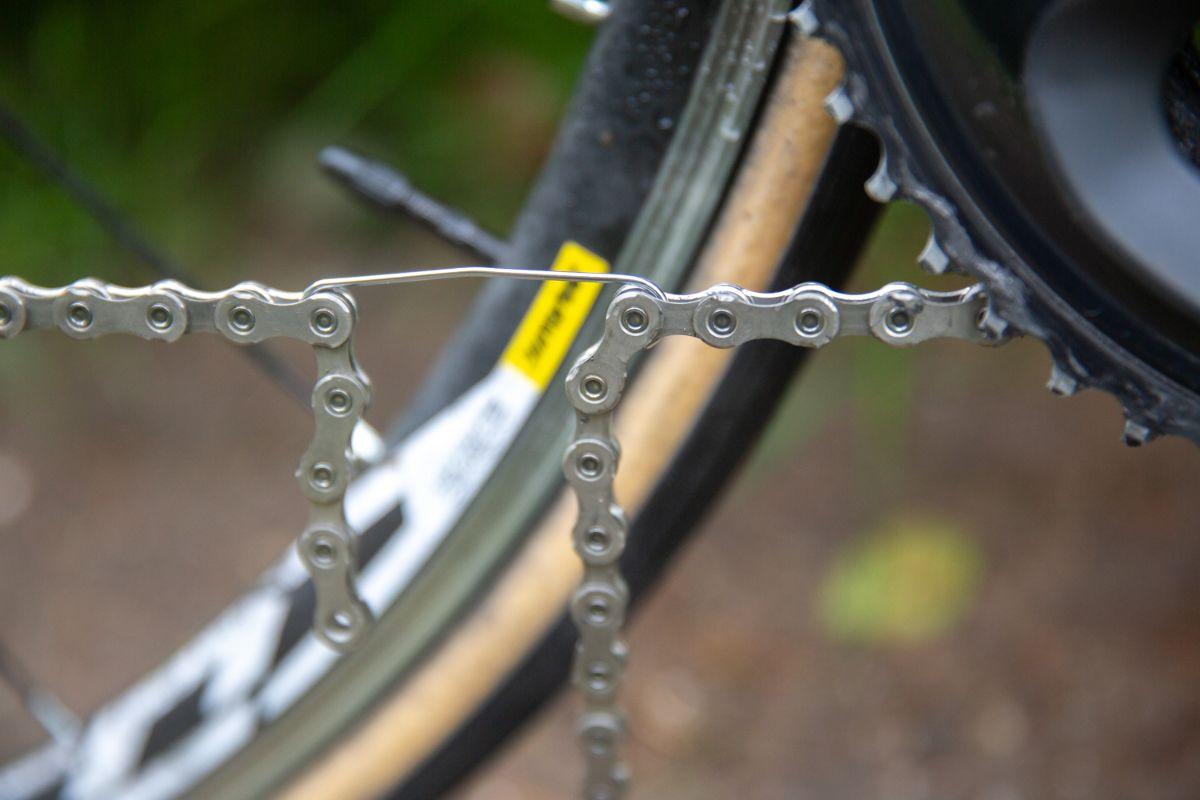
10. Place the quick link plates on the inside and outside of the chain.
The quick link plate with the writing on it goes on the outside of the chain.
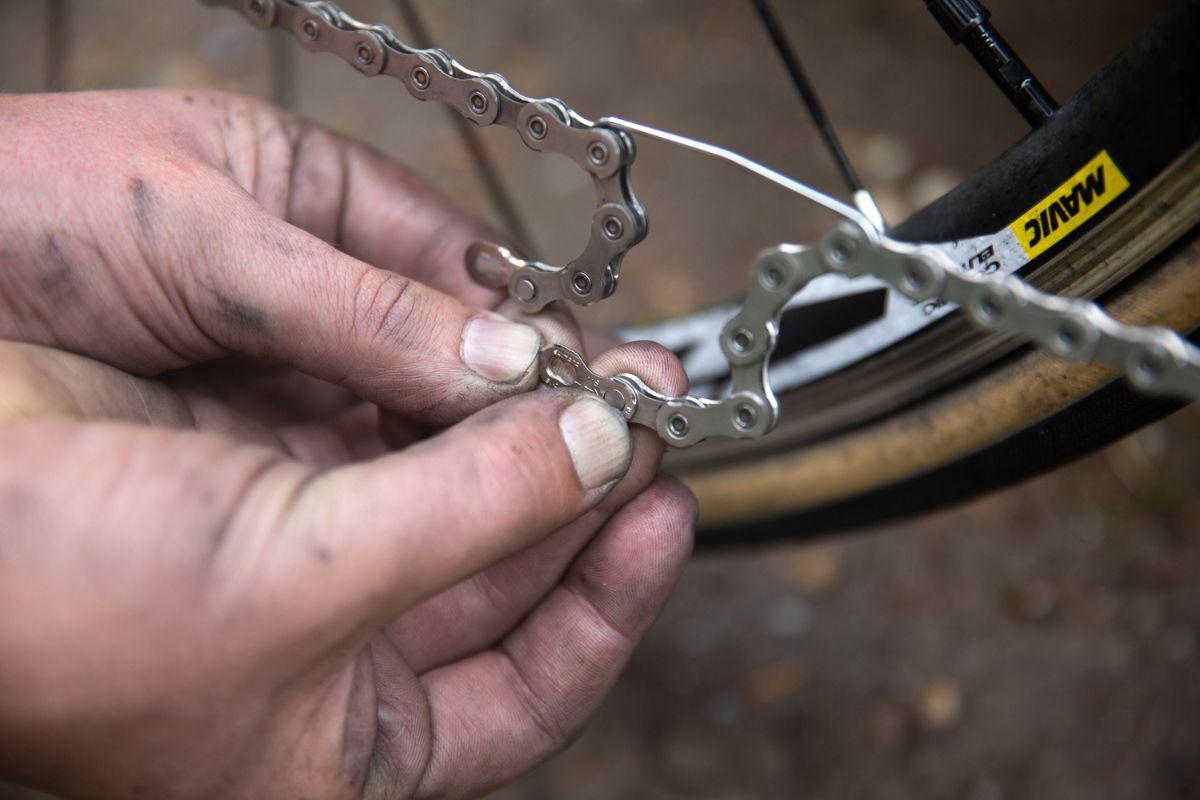
11. When the quick link plates are on, you pull slightly on the chain and then click them into place with the missing link pliers.When the chain is in place, remove the tool and you're ready to hit the road with a spanking new chain!
Replacing a chain (without quick link)
Some bike chains have no missing link and must be replaced using a chain breaker. You'll need the following to replace a chain that has no missing link:
- Chain breaker
- New bike chain
- Chain wear tool
- Old spoke tool
- Pliers (flat nosed)
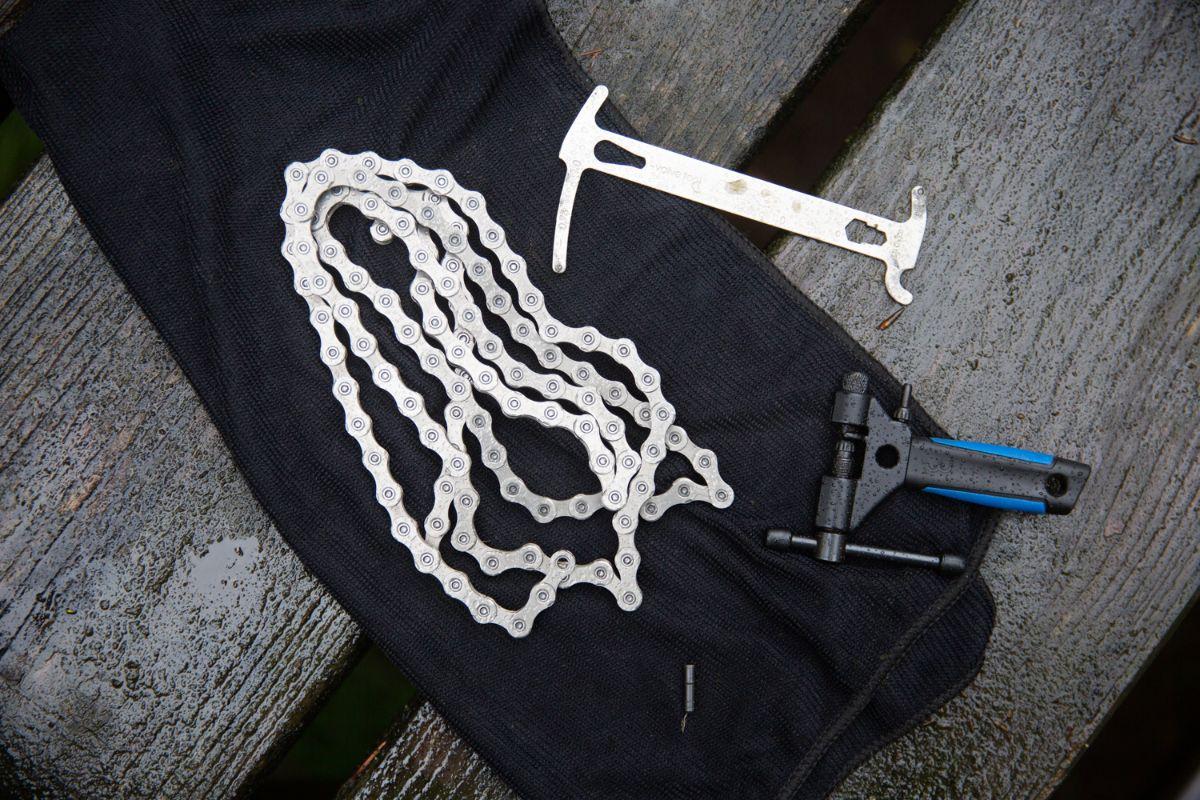
-
Place the chain in a chain breaker
Position the chain breaker correctly on the chain.
-
Screw in the chain breaker.
It takes a bit of effort. Just turn it until the pin comes out the other side.
-
Screw the chain breaker back out and remove the pin.
When you remove the pin the chain will come loose.
-
Lay the new chain over the smallest chainring at the front
Place the chain on the smallest chainring.
-
Lay the chain on the smallest cog at the rear
Make sure that the chain stays on the chainring while placing it on the smallest cog on the cassette.
-
Run the chain in front of the top jockey wheel of your rear derailleur
Push the derailleur cage forward a bit to make it easier to get the chain over the upper jockey wheel.
-
Then run the chain through the derailleur cage channel
For this you can also push the derailleur cage forward a bit.
-
Lastly, run the chain behind and under the lower jockey wheel
Now the chain is running correctly through the rear derailleur.
-
Now check that your bike chain is long enough
You do this by checking that the chain doesn't have any slack in it when it is on the smallest chainring and smallest cog. If there is slack you need to shorten it. You can use a chain breaker to remove links to make your chain shorter.
-
To make fitting your chain easier, remove some tension with a handy spoke tool
This tool is usually included on missing link pliers. If it's not you can just make one out of an old spoke.
-
Close your chain by inserting the connecting pin
These are delivered standard with new bike chains.
-
It's important to keep an open and a closed end on the chain
Clip the two links together.
-
Then screw the pin in with the chain breaker
This also requires a bit of elbow grease!
-
Finally, remove the ends of the connecting pin with a pair of flat nosed pliers
Voilà, you have successfully replaced your bike chain!
Mees Janssen
I am very occupied with everything that has to do with cycling in my spare time. The fact that I get to do this during my job as well makes it all the more special. Since I live in Arnhem, I like to go cycling in my “backyard” (de Posbank) with my road bike or mountain bike. Besides cycling myself, I also love to watch professional cycling on the tv. My television is doing overtime during the summer, because I like to follow all the big cycling tours like the Giro, the Tour de France and the Vuelta. It may come as no surprise that when the Giro d´Italia crossed Arnhem in 2016, I was over the moon!
Related posts

How To Plan a Route Using Komoot? [How-To]
27 March 2023Planning and finding your own cycle routes sounds more complicated than it actually is ...

Do your own bike maintenance work! [Do It Yourself Tips]
7 February 2023Buying a new road, mountain or gravel bike is one thing. Maintaining your bike properly is another ...
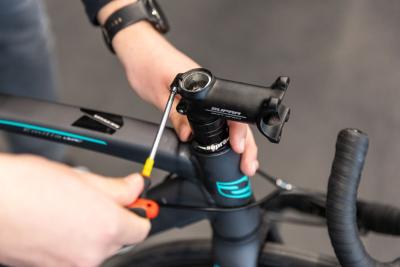
Replace the stem of your road bike in 11 steps [Bike Techcenter]
26 April 2022For road cyclists, being comfortable on your bike is of the utmost importance ...
 Nederland
Nederland België
België Deutschland
Deutschland United Kingdom
United Kingdom Finland
Finland Ireland
Ireland Luxembourg
Luxembourg Portugal
Portugal Poland
Poland Österreich
Österreich France
France España
España Italia
Italia Sverige
Sverige Danmark
Danmark















































































































































































































































